In the 1950s, 42nd Street was a place of constant motion and sharp contrasts, a loud, beating heart in the center of Manhattan. The glamour of its earlier years as the core of the legitimate theater district was fading, replaced by a new, restless energy. This energy flowed from the west, where the massive Port Authority Bus Terminal opened in 1950, disgorging a steady stream of commuters, soldiers, sailors, and travelers onto the street day and night.
The street’s main attraction was its long row of movie theaters. These were former grand movie palaces that had once premiered Hollywood’s biggest films. By the 1950s, their programming had changed. The marquees of theaters like the Rialto, the Victory, and the Amsterdam now advertised double and triple features. For a low admission price, audiences could sit for hours and watch B-movies, westerns, horror films, and the latest science fiction creature features. The posters outside promised thrilling, sensational stories that played continuously.
Beyond the movie houses, 42nd Street offered a different kind of spectacle. It was a hub for arcades, shooting galleries, and storefront attractions designed to separate a person from their loose change. One of the most famous spots was Hubert’s Museum and Flea Circus, located near the corner of Broadway. For a quarter, visitors could see a collection of human oddities, sword swallowers, and magicians. The main event was Professor Roy Heckler’s Flea Circus, where trained fleas performed feats like pulling tiny chariots.
Read more
The sidewalks were a river of people from all walks of life. Office workers from the newly built skyscrapers to the east mixed with sailors in their crisp white uniforms. Tourists stood looking up at the towering neon signs while locals hurried past stands selling hot dogs, soft pretzels, and roasted chestnuts. The street was noisy, filled with the sounds of bus brakes, movie sound effects spilling onto the sidewalk, and the bells and buzzers of the penny arcades.
This version of 42nd Street was not yet the infamous “Deuce” of later decades, but the foundation was being laid. The constant turnover of people and the availability of cheap, all-day entertainment created an environment that operated by its own set of rules. It was a gritty, hardworking entertainment strip that offered a direct, unfiltered slice of New York City life.


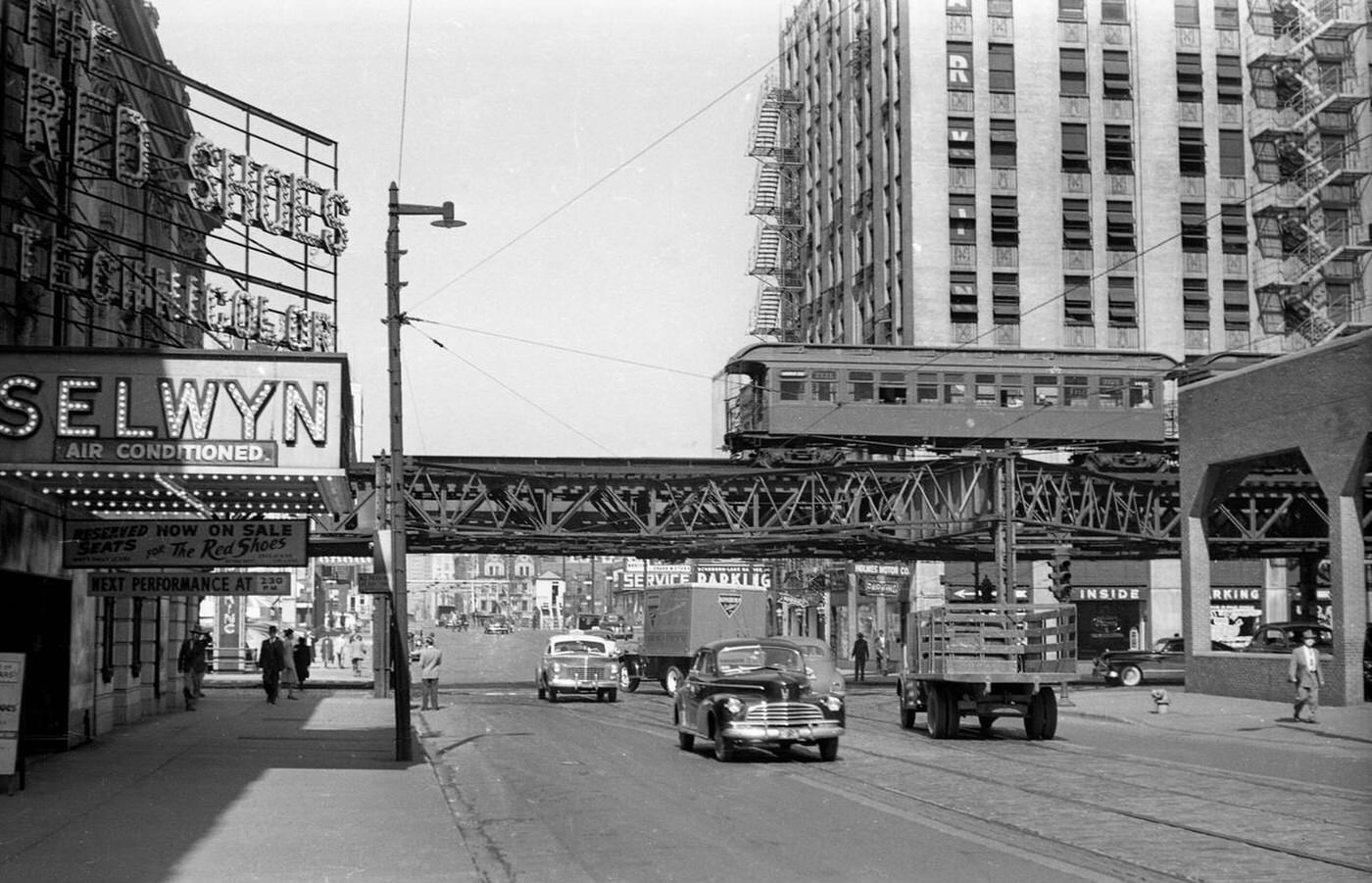
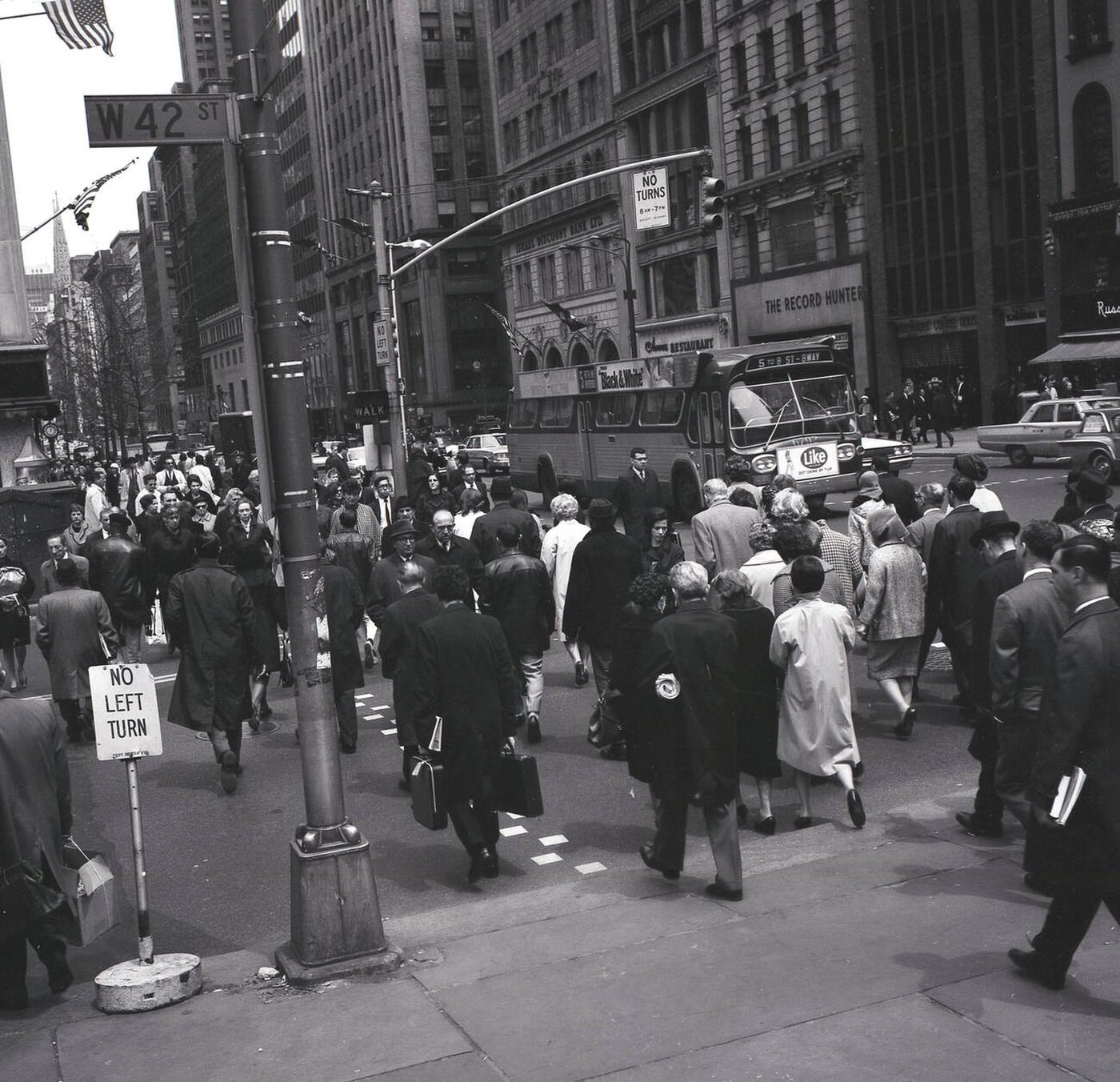
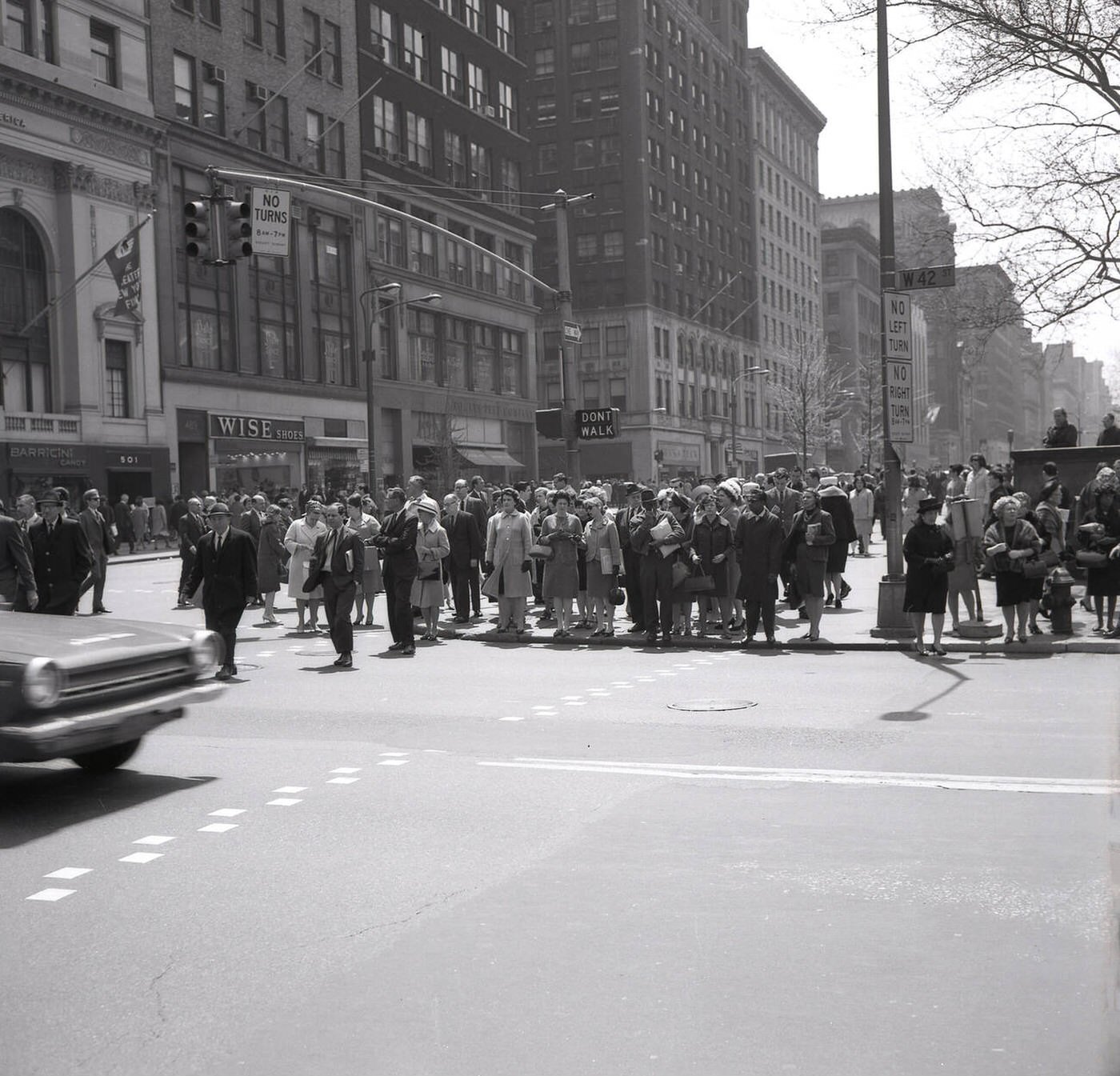
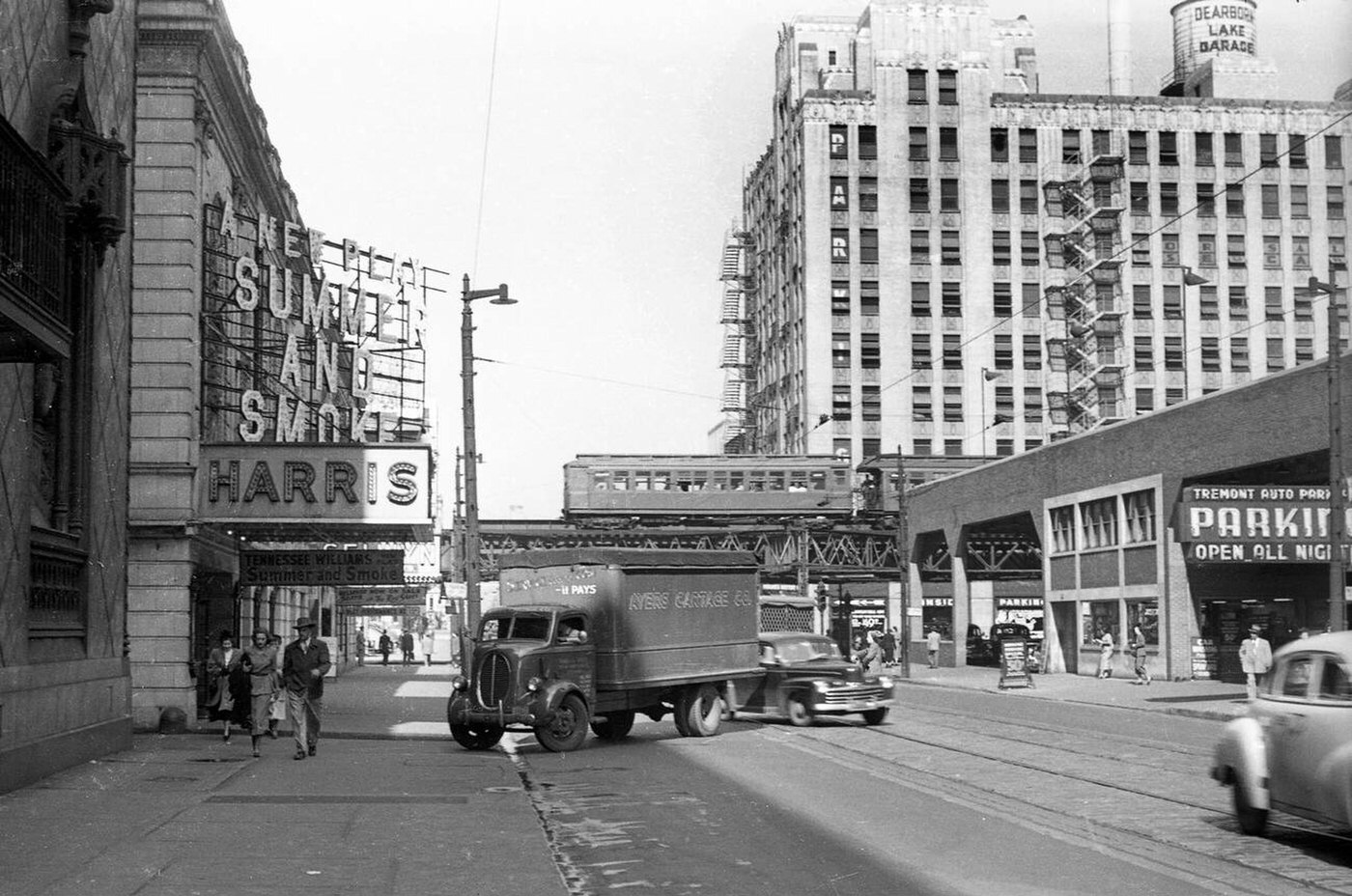
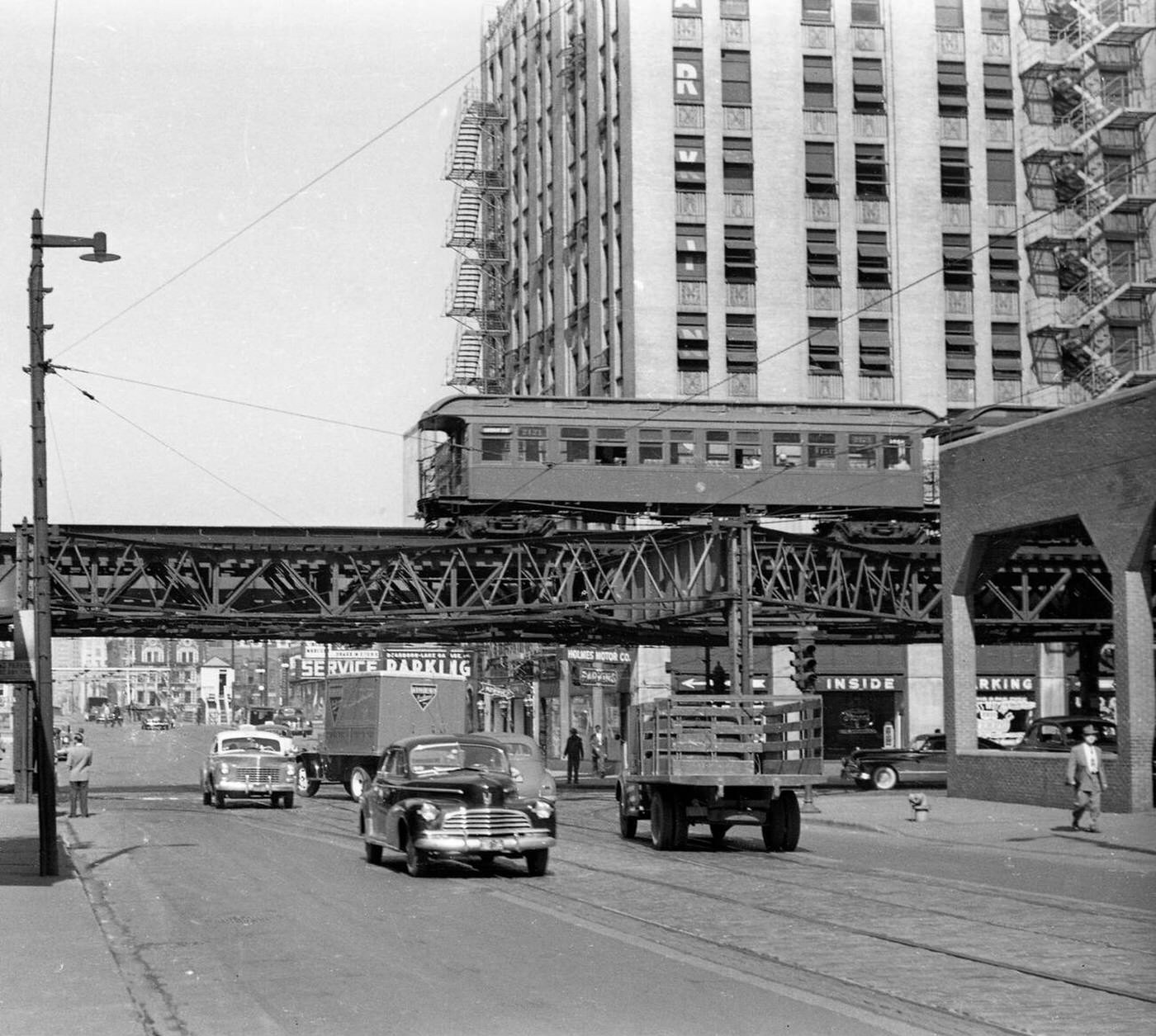
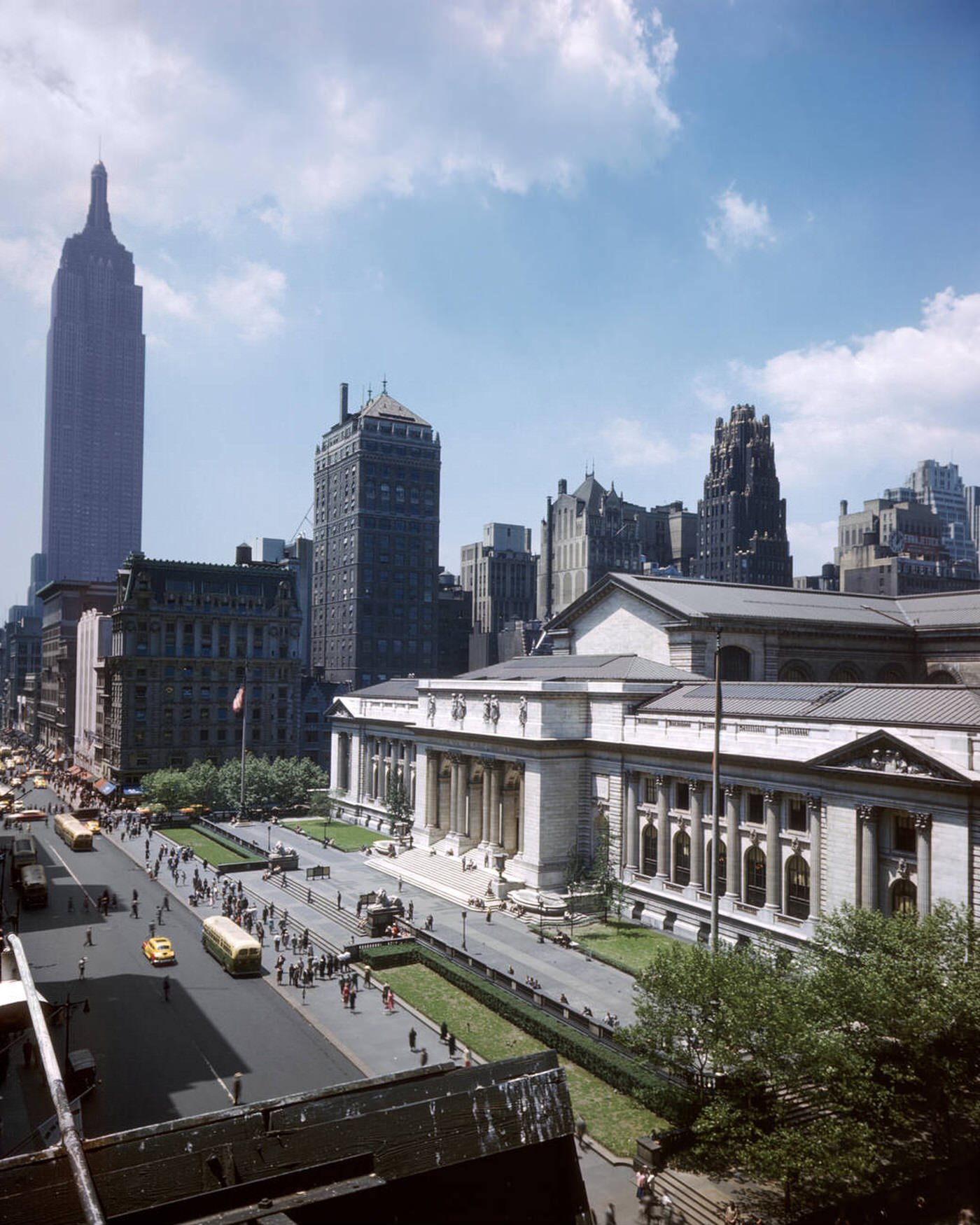
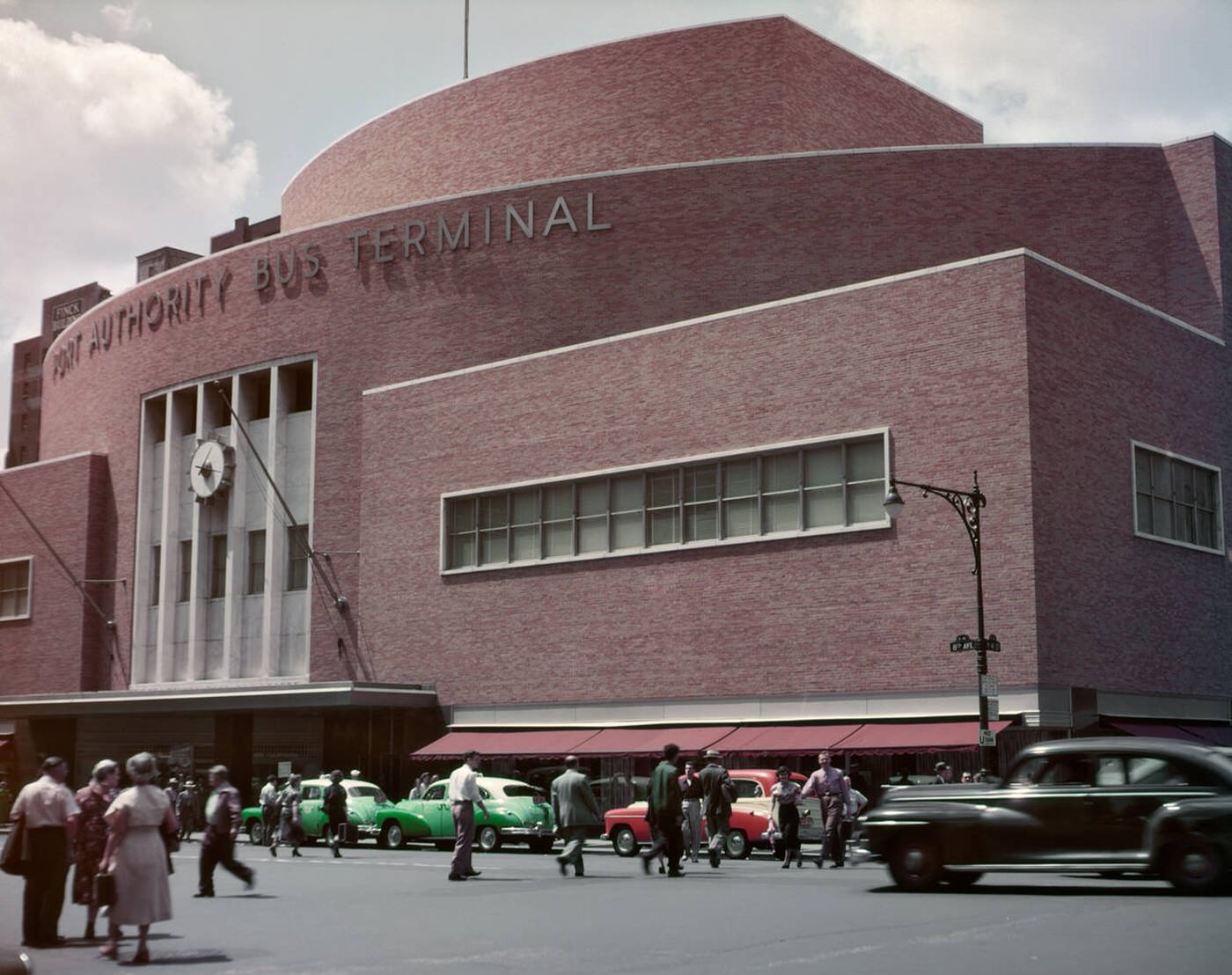
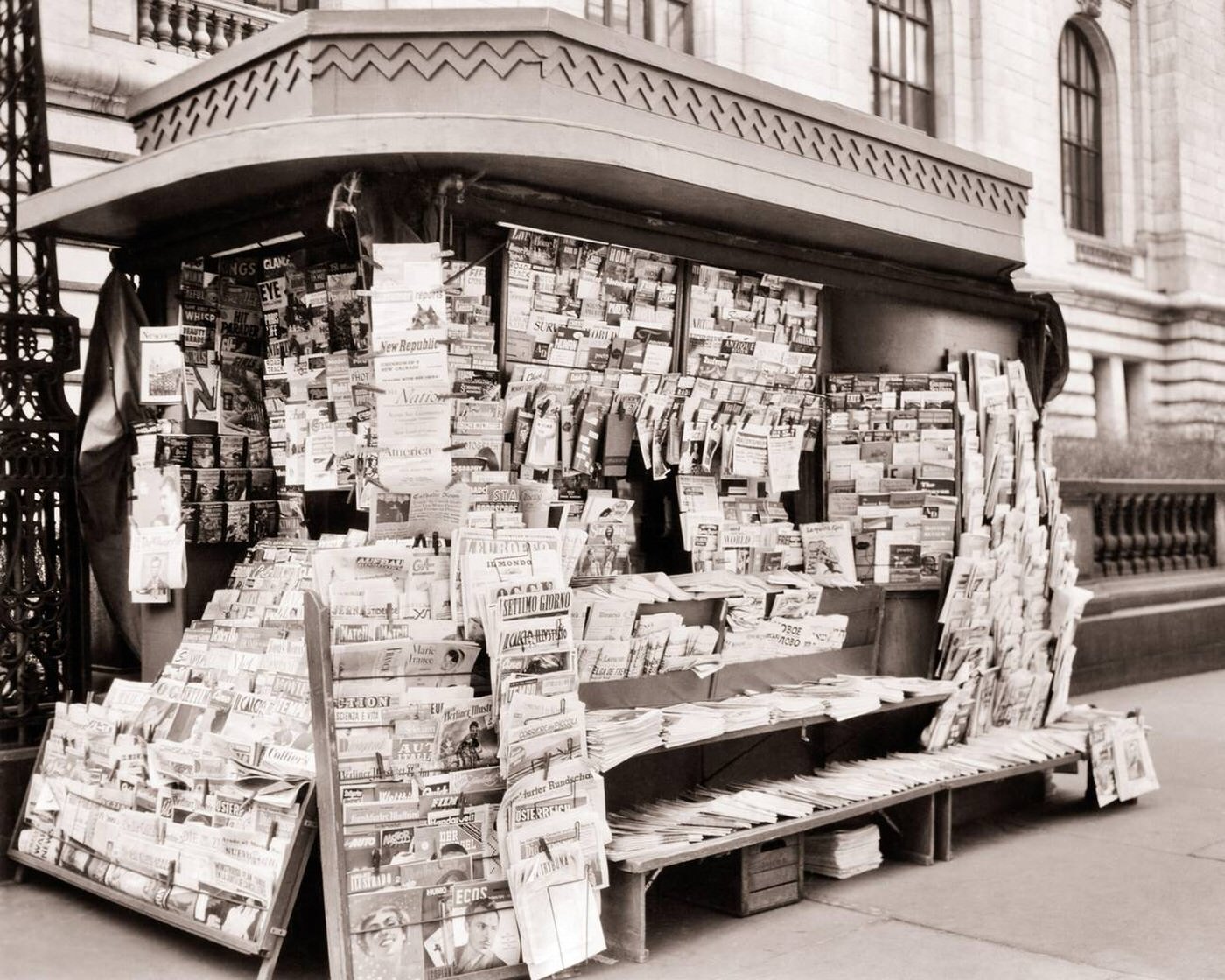
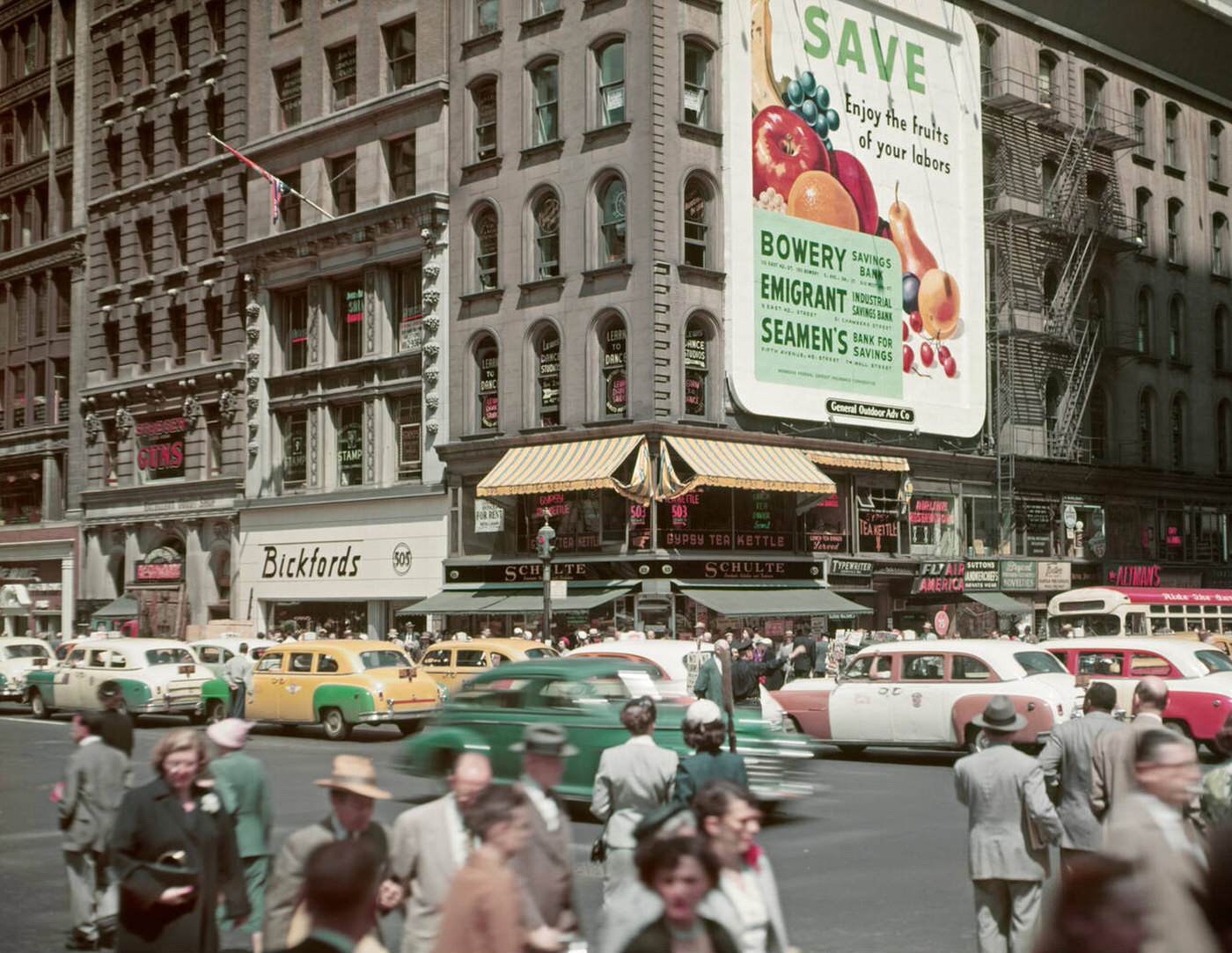
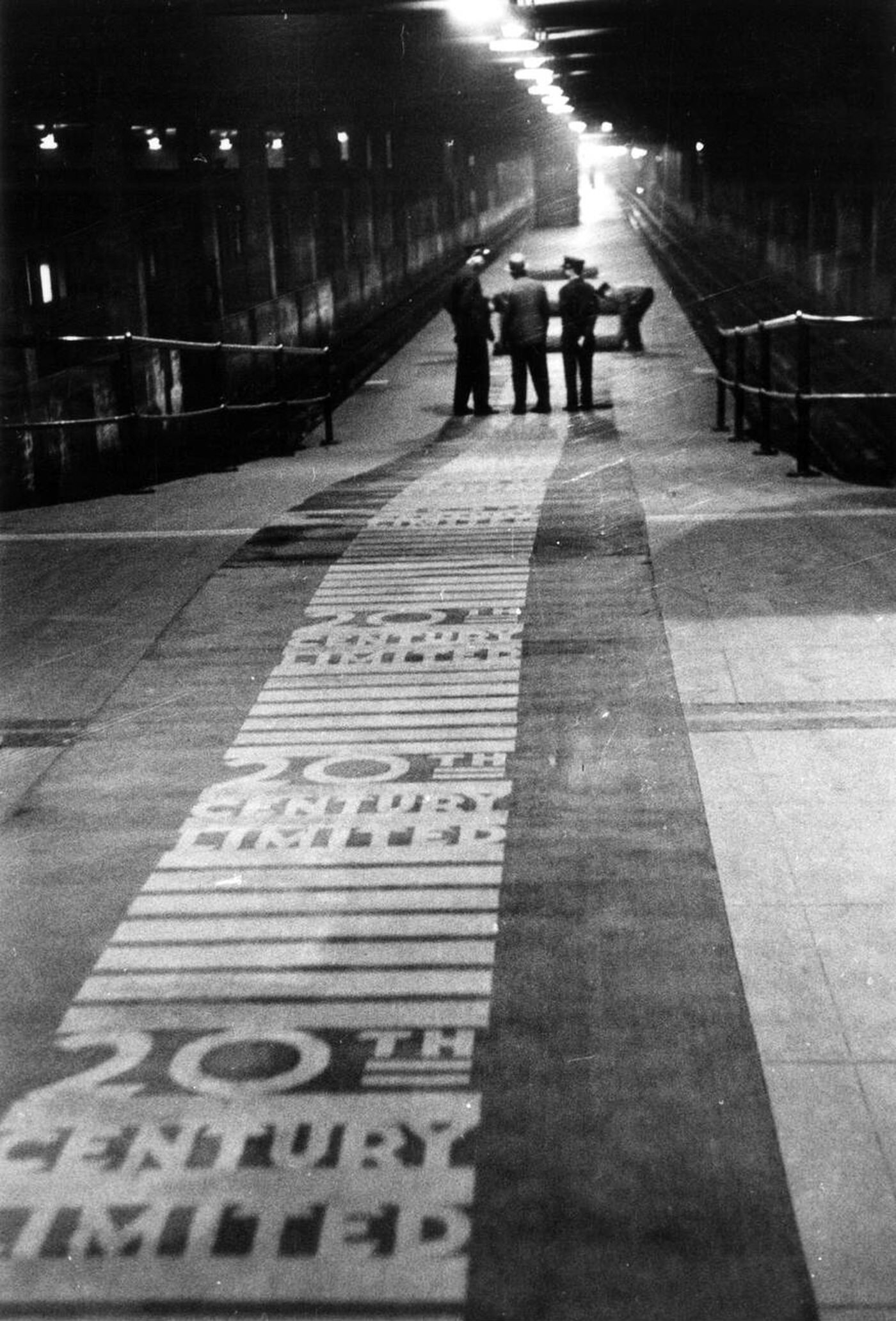
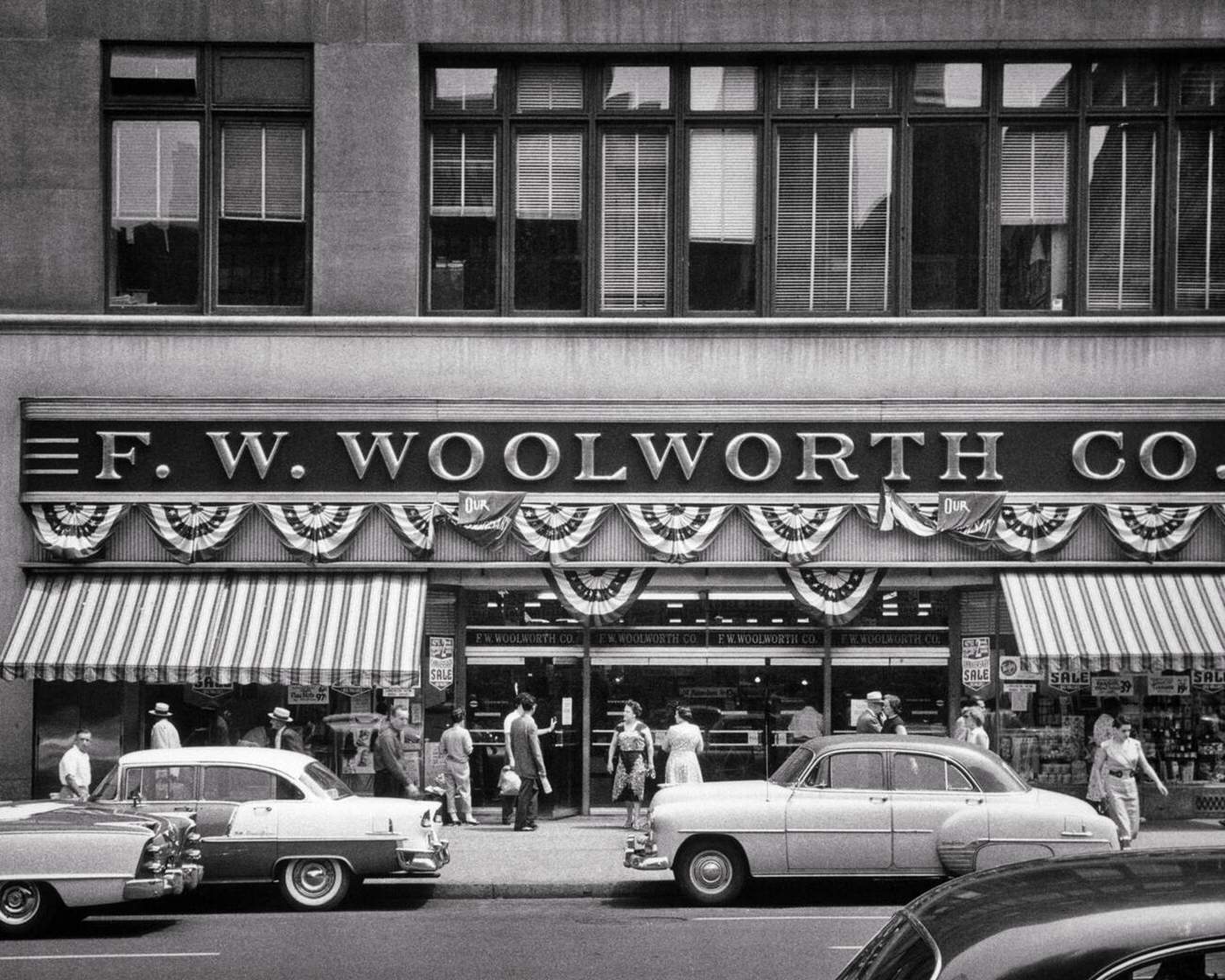
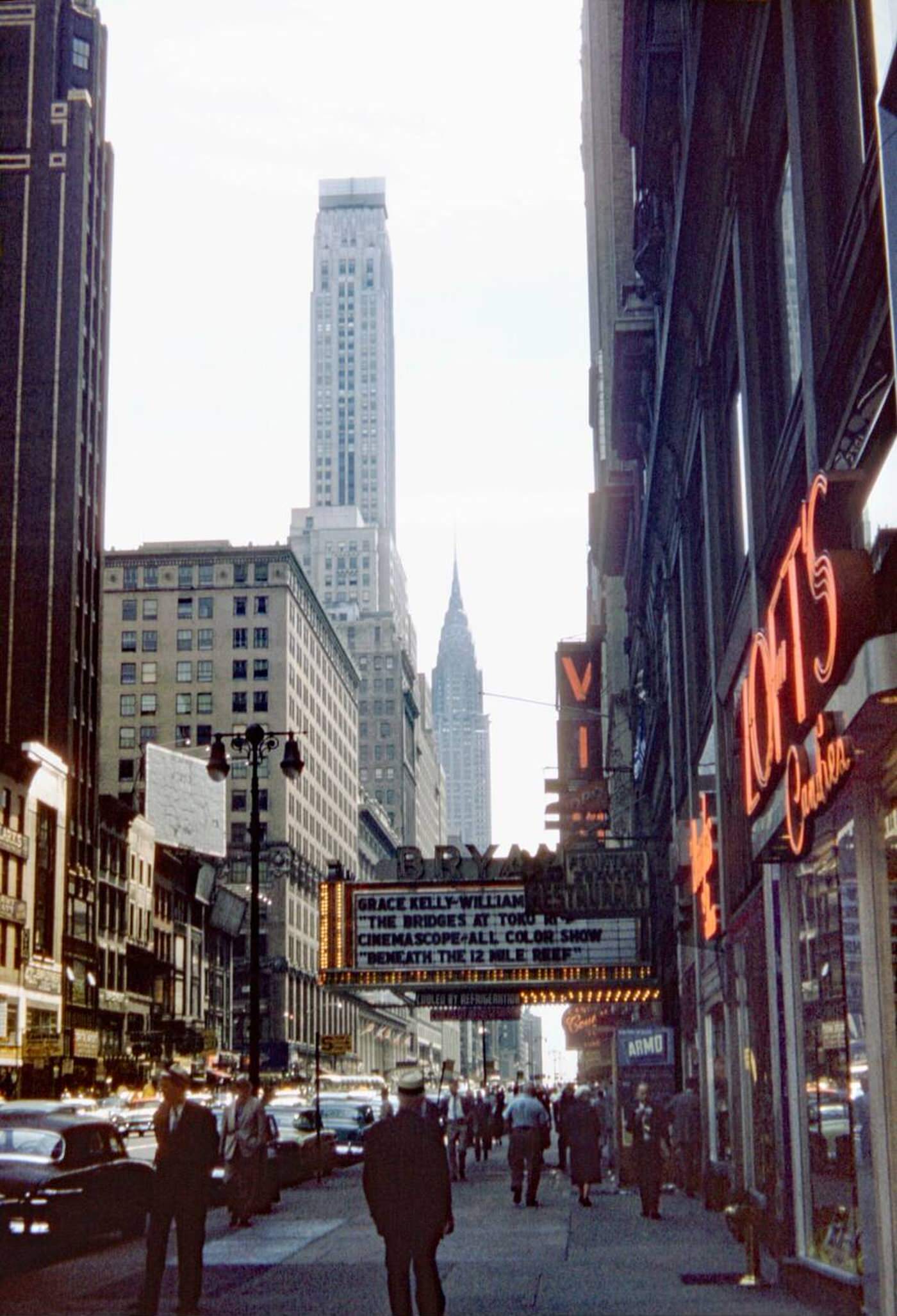
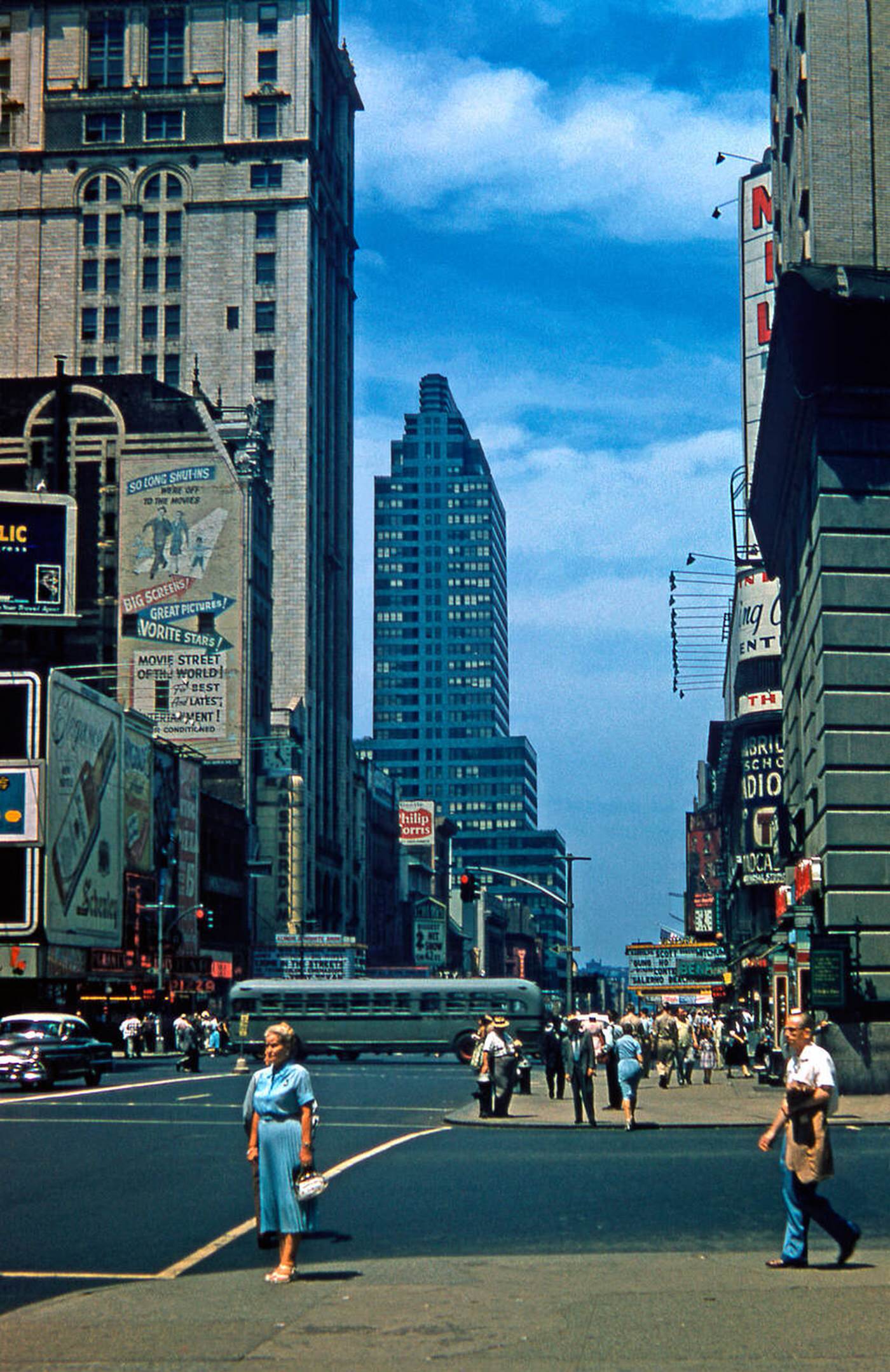
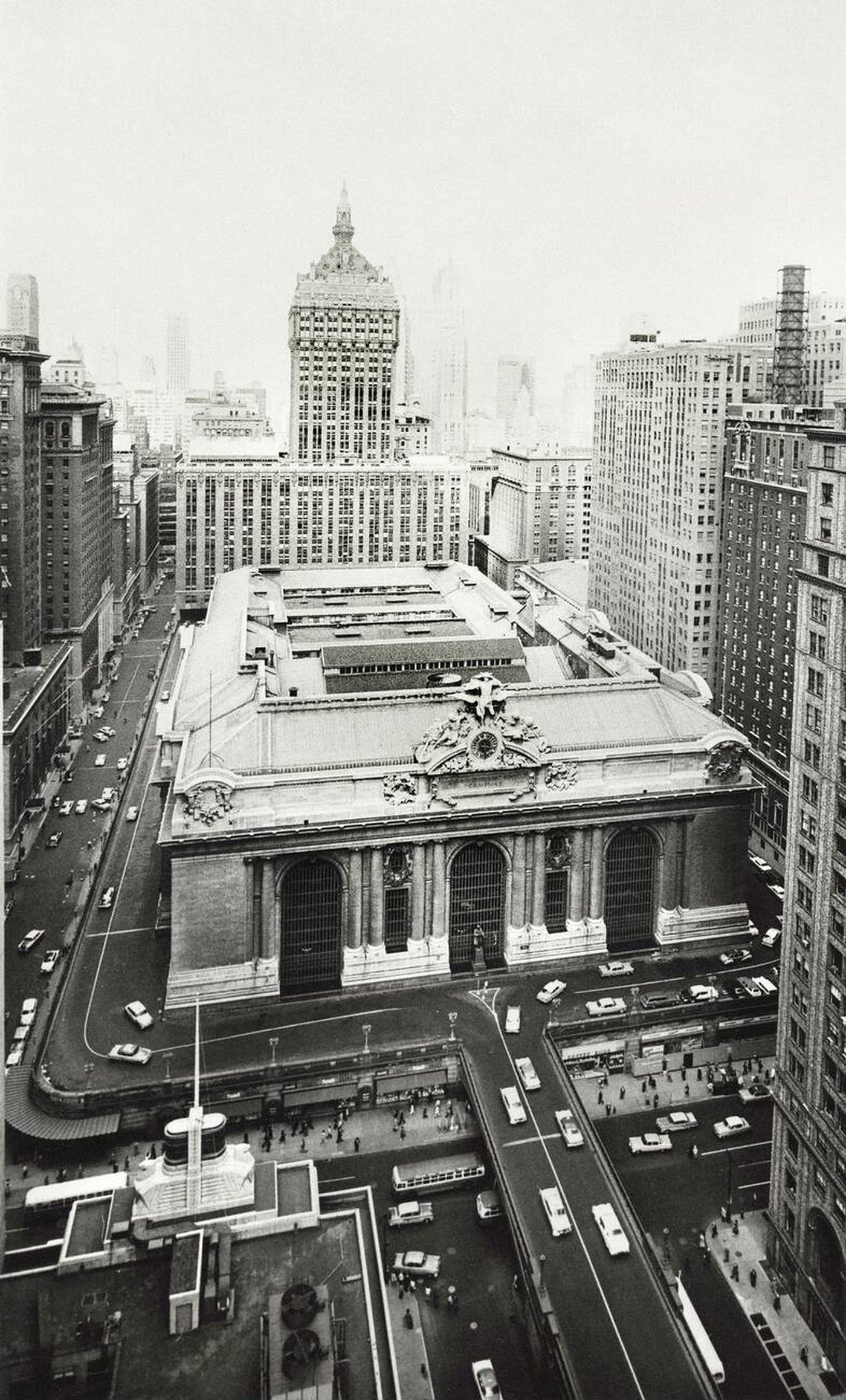
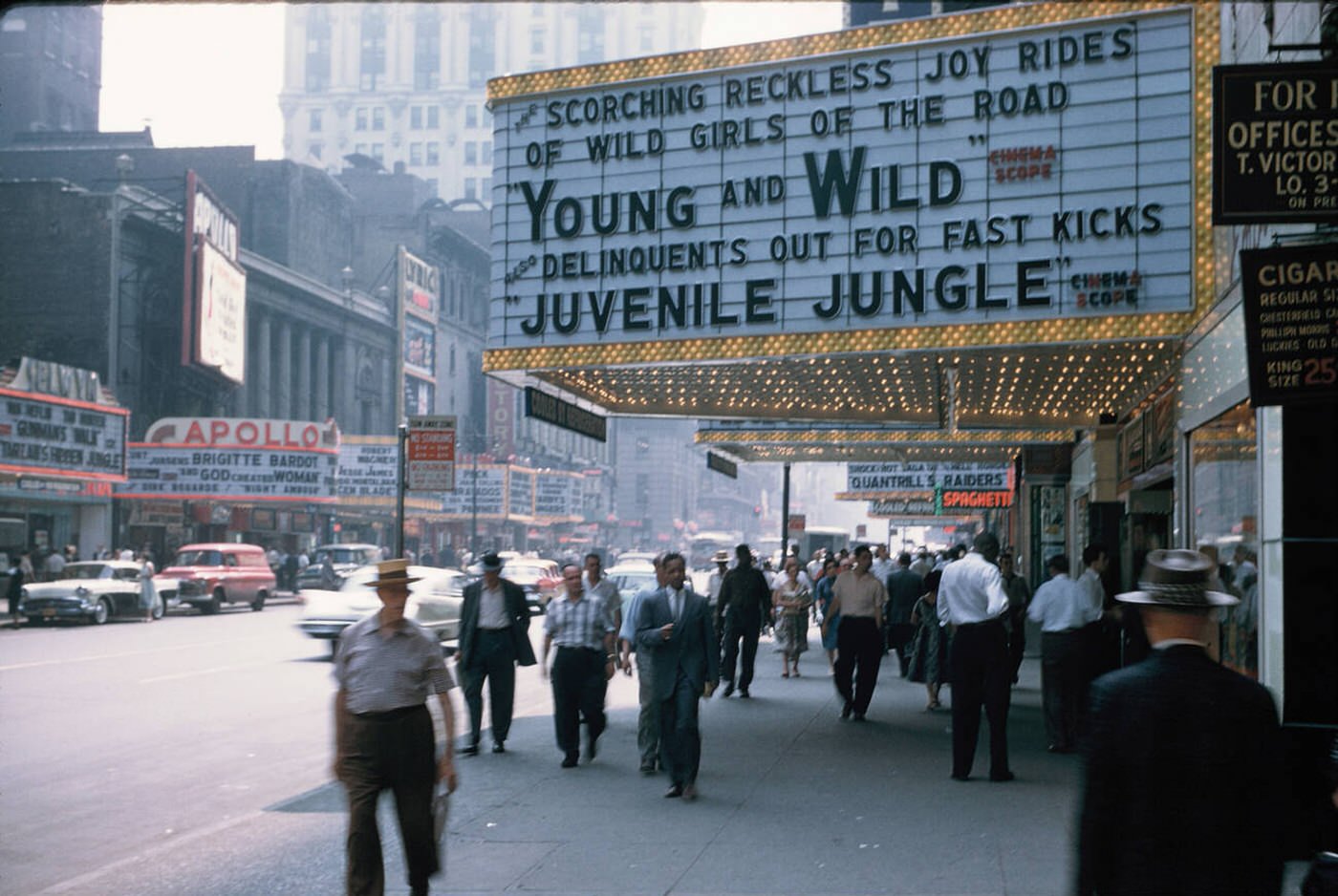
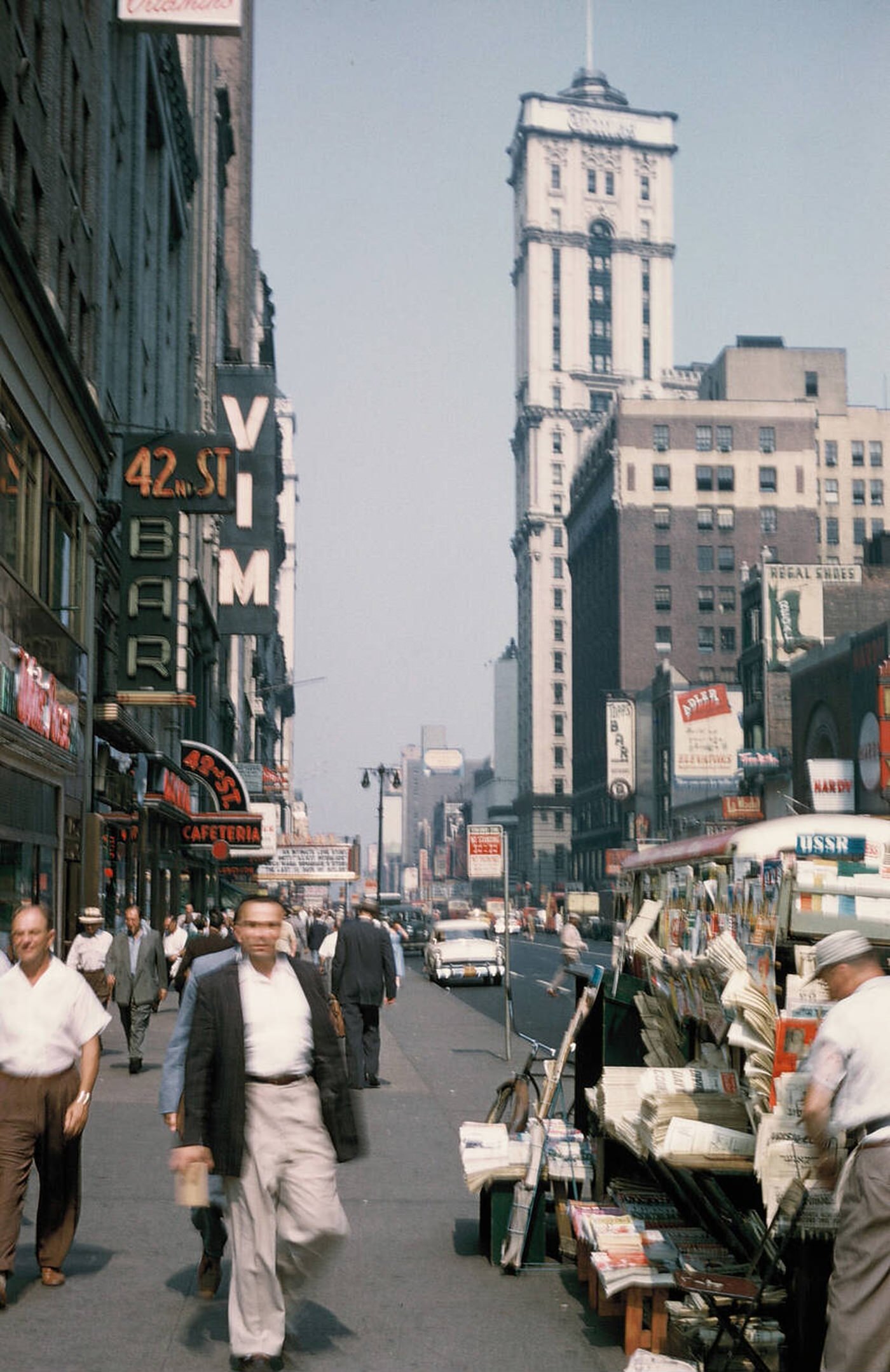
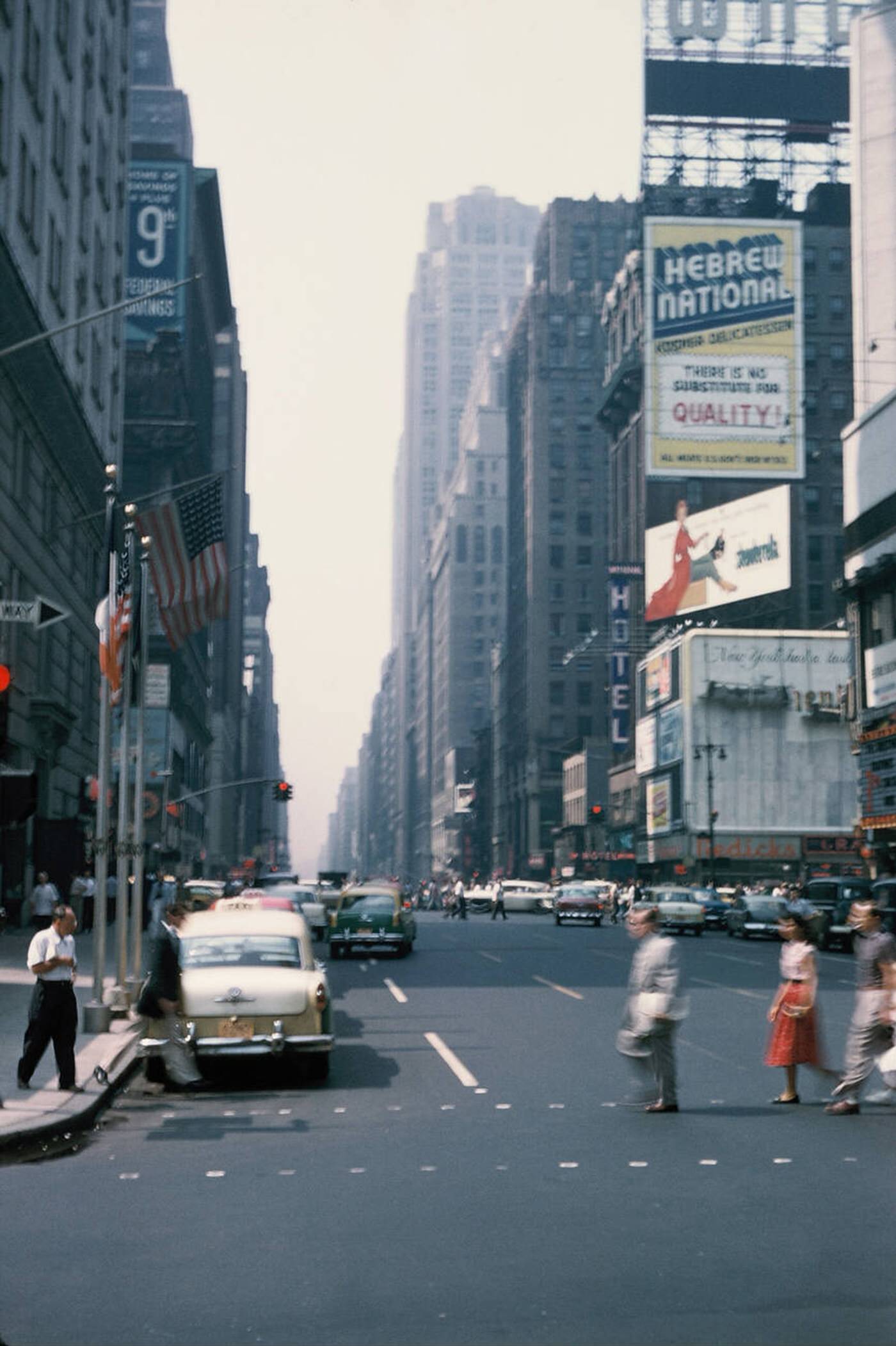
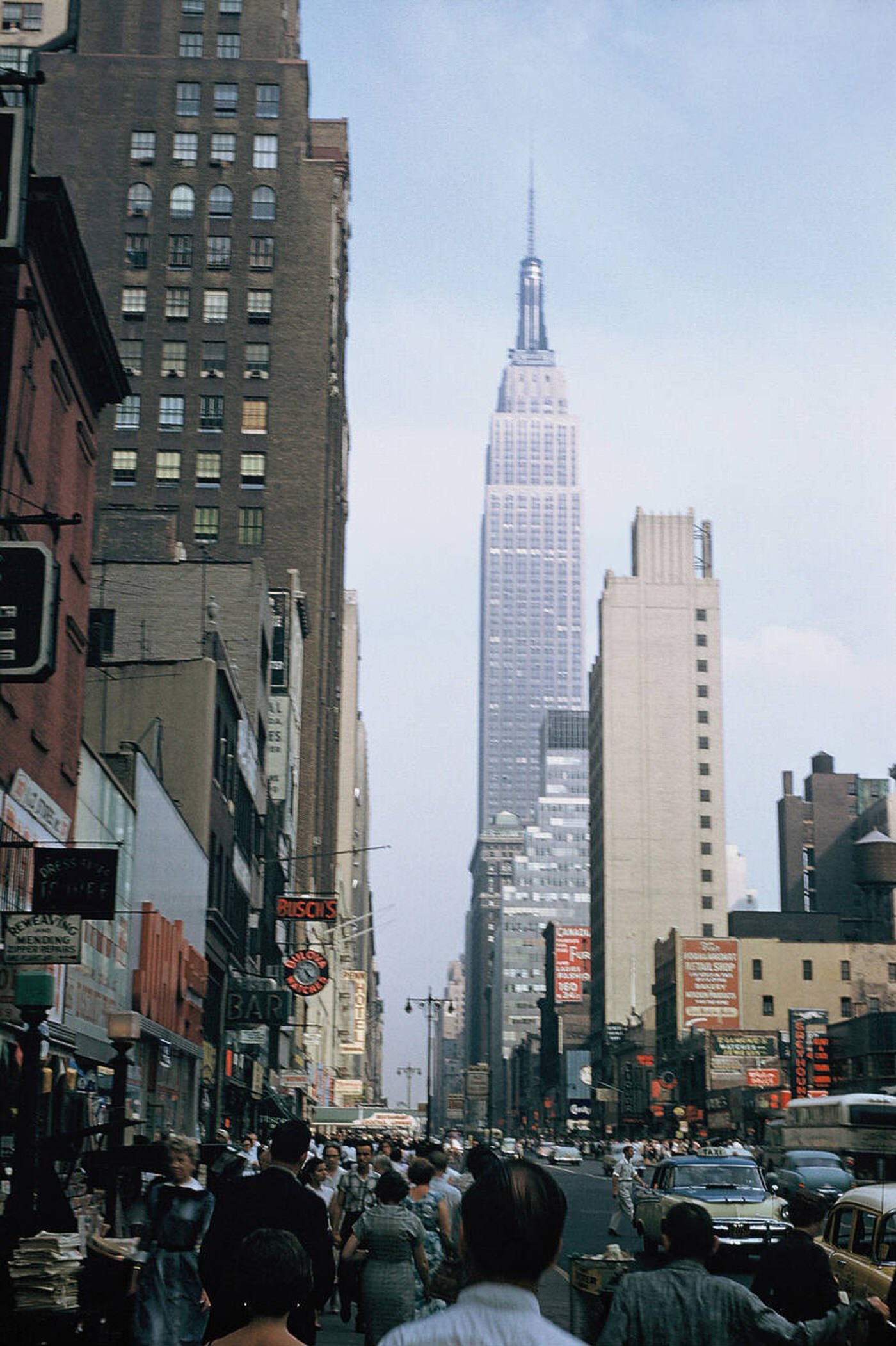
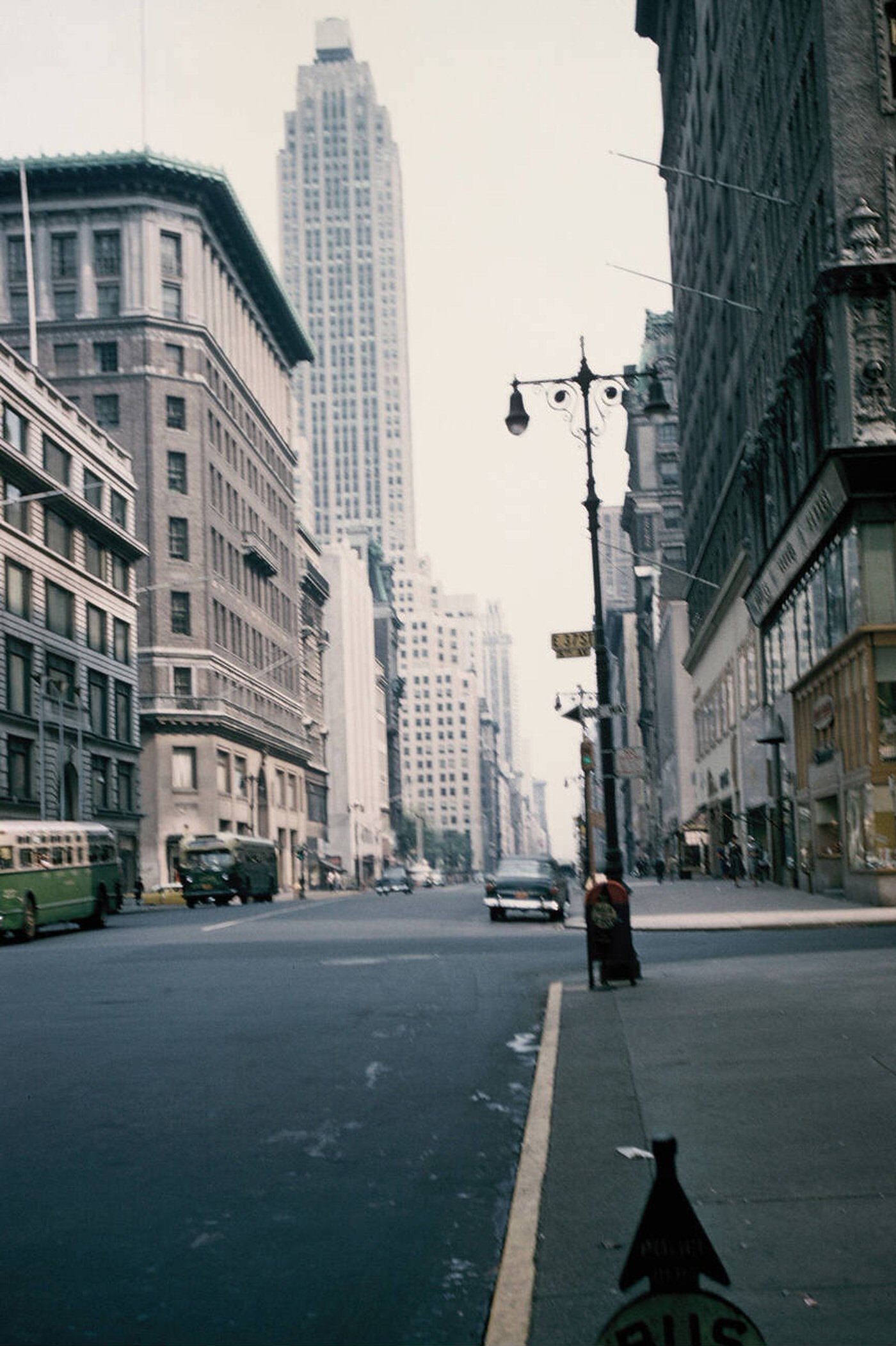
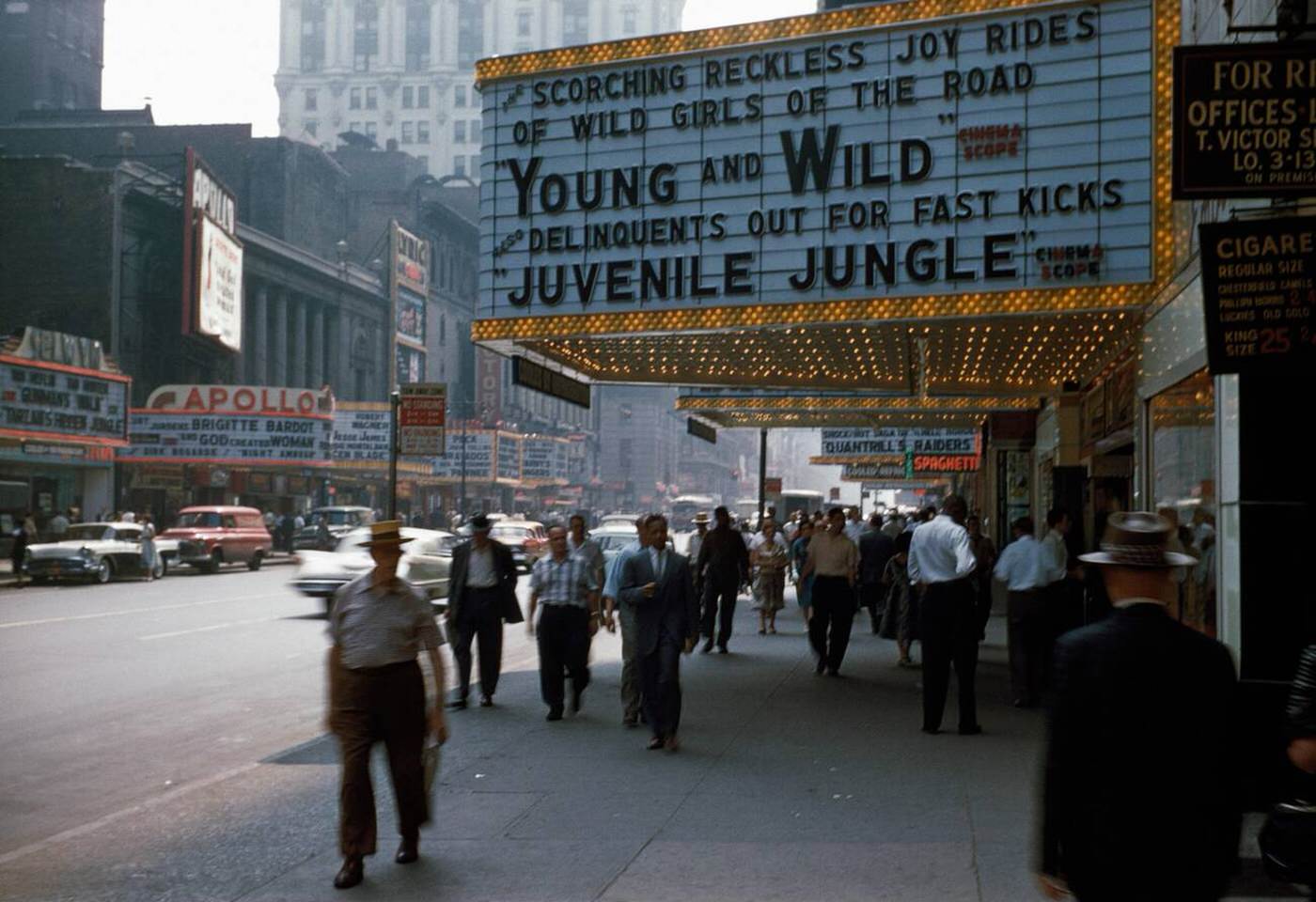
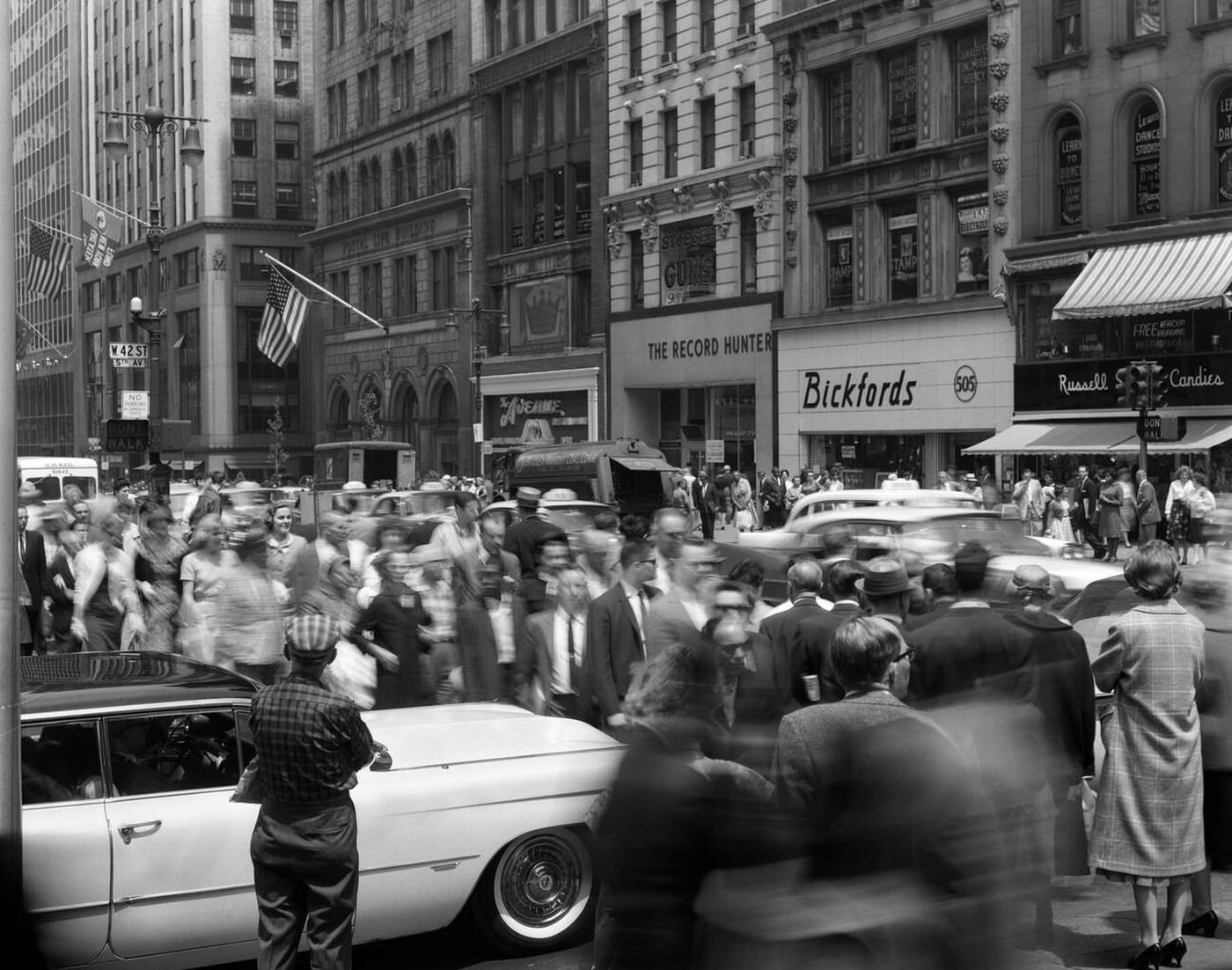

GIPHY App Key not set. Please check settings